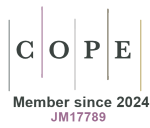Most read articles by the same author(s)
- Adolfo Favaretto, Francesco Grossi, Alessandro Morabito, Roberto Ravasio, Costs of adverse events associated with afatinib, erlotinib, and gefitinib first-line therapies in advanced non-small-cell lung cancer harboring EGFR-activating mutations , Global and Regional Health Technology Assessment: Vol. 4 No. 1 (2017): January-December 2017
- Roberto Ravasio, Cost-Effectiveness Analysis of Long-Acting Bronchodilators for the Treatment of COPD (Moderate to Very Severe) , Global and Regional Health Technology Assessment: Vol. 2 No. 3 (2015): September-December 2015
- Antonio Cuneo, Roberto Ravasio, Nicola Amedeo Mazzanti, Economic evaluation of therapeutic sequences in the treatment of patients with chronic lymphocytic leukemia and coexisting conditions , Global and Regional Health Technology Assessment: Vol. 4 No. 1 (2017): January-December 2017
- Luigi Bartolomei, Anna Rita Bentivoglio, Massimo Bizzarini, Patrizia Maria Caglioni, Luana Cerbarano, Marco Frontoni, Giacomo Lus, Giovanni Majorana, Stefania Alessandra Nassetti, Maurizio Osio, Roberto Ravasio, Roberta Ravenni, Antonio Santoro, Nicola Smania, Flavia Torlizzi, Sebastiana Claudia Valvo, Cost Minimization Analysis of Bont-As in the Treatment of Upper Limb Spasticity and Cervical Dystonia , Global and Regional Health Technology Assessment: Vol. 3 No. 1 (2016): January-April 2016
- Roberto Ravasio, Patrizia Pisarra, Roberto Porzio, Marco Comaschi, Economic Evaluation of Canagliflozin versus Glimepiride and Sitagliptin in Dual Therapy with Metformin for the Treatment of Type 2 Diabetes in Italy , Global and Regional Health Technology Assessment: Vol. 3 No. 2 (2016): May-August 2016
- Alberto Zaniboni, Roberto Ravasio, Difficulties and Challenges in the Management of Market Access for Innovative Oncological Therapies , Global and Regional Health Technology Assessment: Vol. 3 No. 3 (2016): September-December 2016
- Roberto Ravasio, Economic Analysis of the Immunostimulant OM-85 for the Prevention of Paediatric Recurrent Upper Respiratory Tract Infections , Global and Regional Health Technology Assessment: Vol. 2 No. 3 (2015): September-December 2015
- Clement Tournier, Valerie Deroo, Sara Villa, Giovanni Giuliani, Carlo Lucioni, Silvio Mazzi, Roberto Ravasio, An Approach to Evaluate Payment-by-Results Agreements , Global and Regional Health Technology Assessment: Vol. 3 No. 2 (2016): May-August 2016
- Roberto Ravasio, Giovanni Rosti, Cost-consequence analysis of aprepitant compared to standard therapy (5-HT3 + corticosteroids) for the prevention of highly emetogenic chemotherapy-induced nausea and vomit , Global and Regional Health Technology Assessment: Vol. 2 No. 2 (2015): May-August 2015
- Carlo Cerra, Mirosa Dellagiovanna, Simona Migliazza, Roberto Tettamanti, Corrado Zuliani, Roberto Ravasio, Delia Colombo, Claudia Pitotti, Emanuela Zagni, Observational Analysis of Antineoplastic and Immunomodulating Drug Expenditure in Two Local Health Units in Northern Italy during the Period 2009-2011 , Global and Regional Health Technology Assessment: Vol. 3 No. 3 (2016): September-December 2016









